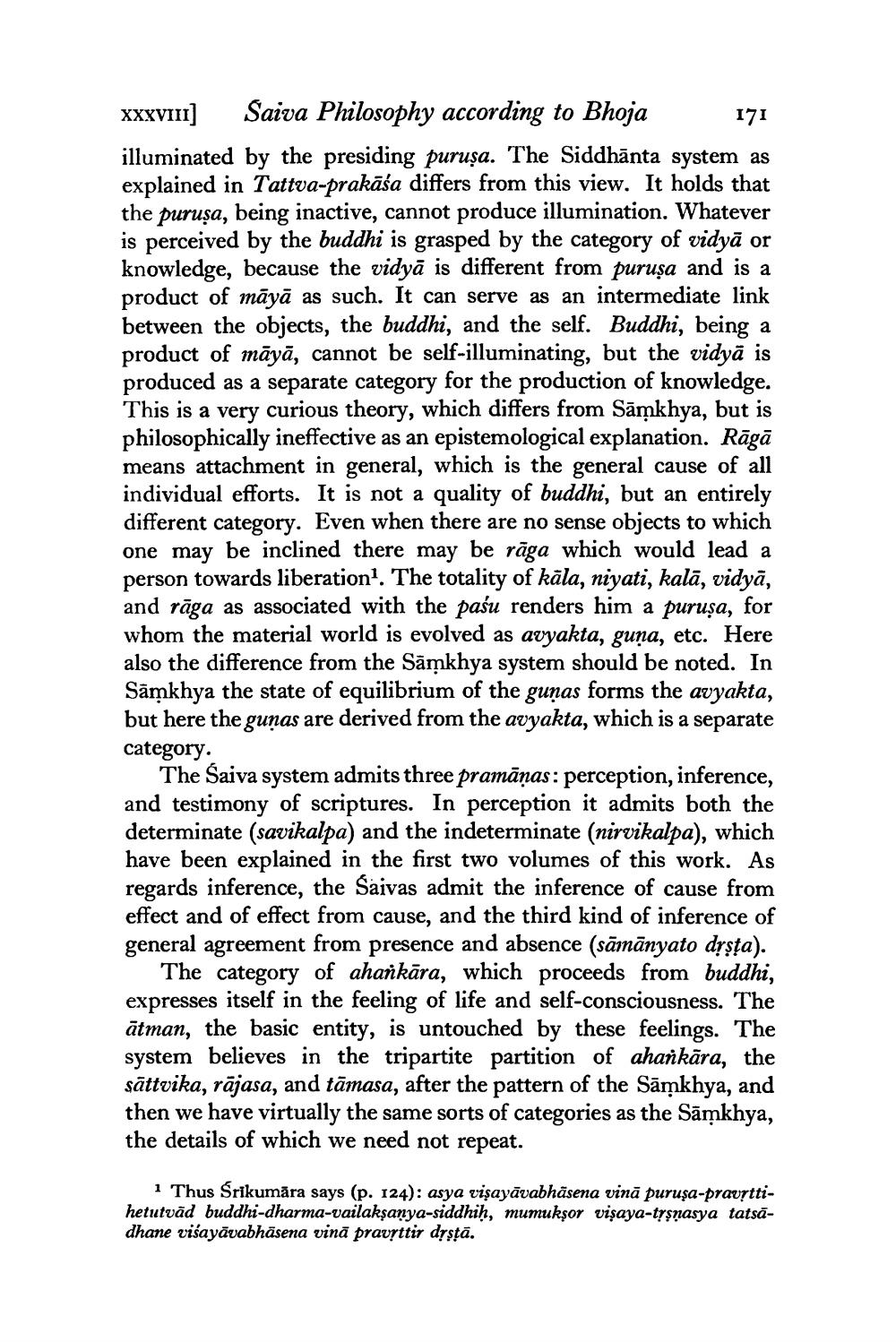________________
XXXVIII] Saiva Philosophy according to Bhoja 171 illuminated by the presiding puruṣa. The Siddhānta system as explained in Tattva-prakāśa differs from this view. It holds that the puruṣa, being inactive, cannot produce illumination. Whatever is perceived by the buddhi is grasped by the category of vidyā or knowledge, because the vidyā is different from puruşa and is a product of māyā as such. It can serve as an intermediate link between the objects, the buddhi, and the self. Buddhi, being a product of māyā, cannot be self-illuminating, but the vidyā is produced as a separate category for the production of knowledge. This is a very curious theory, which differs from Sāmkhya, but is philosophically ineffective as an epistemological explanation. Rāgā means attachment in general, which is the general cause of all individual efforts. It is not a quality of buddhi, but an entirely different category. Even when there are no sense objects to which one may be inclined there may be rāga which would lead a person towards liberation'. The totality of kāla, niyati, kalā, vidyā, and rāga as associated with the pašu renders him a purușa, for whom the material world is evolved as avyakta, guna, etc. Here also the difference from the Sāmkhya system should be noted. In Sāmkhya the state of equilibrium of the gunas forms the avyakta, but here the gunas are derived from the avyakta, which is a separate category.
The Saiva system admits three pramāṇas: perception, inference, and testimony of scriptures. In perception it admits both the determinate (savikalpa) and the indeterminate (nirvikalpa), which have been explained in the first two volumes of this work. As regards inference, the Saivas admit the inference of cause from effect and of effect from cause, and the third kind of inference of general agreement from presence and absence (sāmānyato drsța).
The category of ahankāra, which proceeds from buddhi, expresses itself in the feeling of life and self-consciousness. The ātman, the basic entity, is untouched by these feelings. The system believes in the tripartite partition of ahankāra, the sāttvika, rājasa, and tāmasa, after the pattern of the Sāmkhya, and then we have virtually the same sorts of categories as the Sāmkhya, the details of which we need not repeat.
1 Thus Srikumāra says (p. 124): asya visayāvabhāsena vină puruşa-pravyttihetutvād buddhi-dharma-vailaksanya-siddhih, mumuksor vişaya-tysnasya tatsadhane viśayāvabhāsena vină pravrttir drstā.




